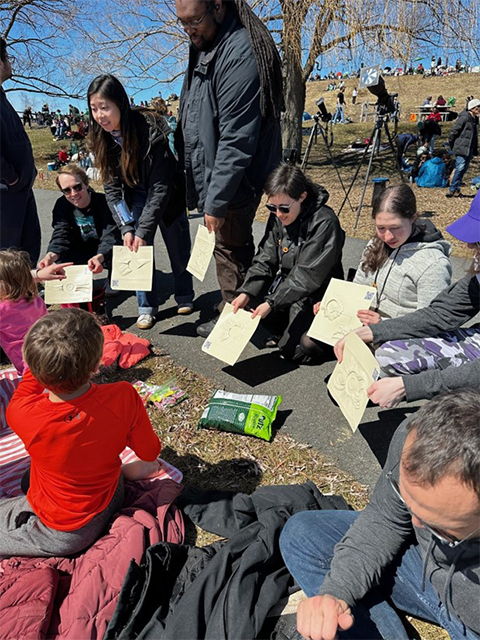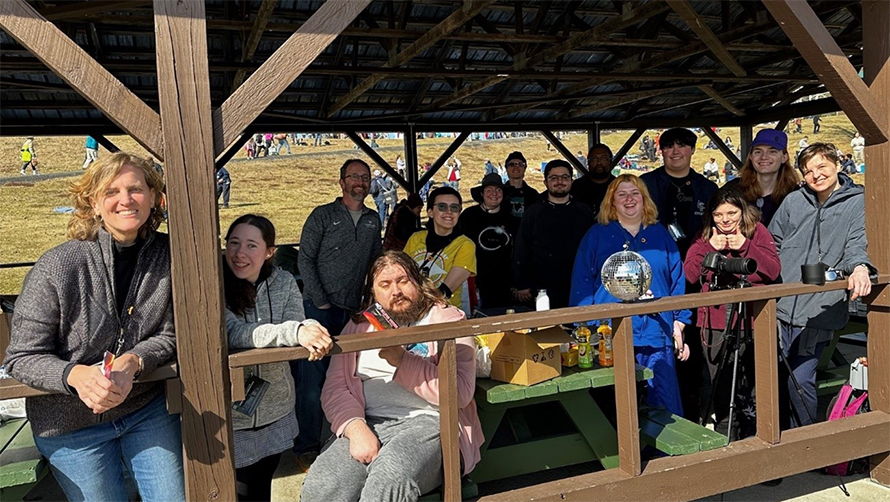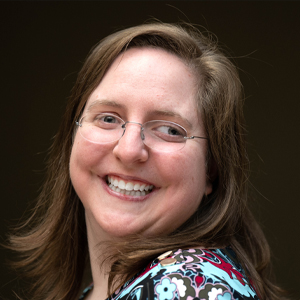
An inclusive solar eclipse — with outreach
On April 8, I took 11 neurodivergent students, with two chaperones (including myself), and one staff member from our college with his family on a 17-hour field trip — 11 hours of which we spent in two vans and one car in bumper-to-bumper traffic that spanned the entire state of Vermont — to see the full solar eclipse in far northern Newport, Vermont.

I am an assistant professor at Landmark College in Putney, Vermont, where I work exclusively with neurodivergent students, including those with autism, attention-deficit/hyperactivity disorder, dyslexia, and executive function challenges. I wanted my students to be part of in this once-in-a-lifetime event while also engaging in science outreach.
The sunflower area
A phenomenon that was going to attract more visitors to Vermont than a peak day in leaf season might not seem ideal for my students, so I collaborated with the town of Newport, to make the eclipse experience more inclusive for neurodivergent individuals.
My co-chaperone, Rebecca Matte, and I had the idea to create what we called a "sunflower area," a low-sensory space where my students and others could enjoy the eclipse without loud noises, large crowds and other overwhelming stimuli. We were inspired by the Hidden Disability Sunflower project.
The organizers in Newport reserved a pavilion for us after just a couple of emails and phone calls. This provided a quiet, controlled environment for students who might otherwise have found the experience overwhelming. We asked that families with loud dogs or other high-energy distractions respect the area, and everyone did.
Our students wore sunflower pins to identify themselves as volunteers, helping others understand the purpose of the space. We could have used a bit more signage, but the area worked well as a sanctuary, and our students experienced the eclipse in a way that felt manageable and even serene. The sunflower area gave them room to breathe, creating a space where they could feel a sense of ownership while still being part of a public event.
Eclipse outreach
We brought along lithographs of past eclipses and used them as conversation starters. As a game, my students invited children to place the images in chronological order, helping them learn about the history of eclipses. The game was accessible to children who were blind or had low vision, allowing everyone to participate. My students worked as a team, dividing up roles based on their strengths —some initiated conversations, others led the game and still others shared fun facts about the science behind eclipses.
After nearly a decade of participating in science outreach, I’d say this event was one of the most rewarding experiences I've had. I felt inspired watching my students demonstrate their science identities and resilience through outreach.
The low-sensory space we created was a small but significant adjustment that made the event more inclusive for everyone. Days like this remind me of the power of accessible science communication and the value of creating environments where all individuals can thrive.

Enjoy reading ASBMB Today?
Become a member to receive the print edition four times a year and the digital edition monthly.
Learn moreGet the latest from ASBMB Today
Enter your email address, and we’ll send you a weekly email with recent articles, interviews and more.
Latest in Science
Science highlights or most popular articles

Bacteriophage protein could make queso fresco safer
Researchers characterized the structure and function of PlyP100, a bacteriophage protein that shows promise as a food-safe antimicrobial for preventing Listeria monocytogenes growth in fresh cheeses.

Building the blueprint to block HIV
Wesley Sundquist will present his work on the HIV capsid and revolutionary drug, Lenacapavir, at the ASBMB Annual Meeting, March 7–10, in Maryland.

Gut microbes hijack cancer pathway in high-fat diets
Researchers at the Feinstein Institutes for Medical Research found that a high-fat diet increases ammonia-producing bacteria in the gut microbiome of mice, which in turn disrupts TGF-β signaling and promotes colorectal cancer.

Mapping fentanyl’s cellular footprint
Using a new imaging method, researchers at State University of New York at Buffalo traced fentanyl’s effects inside brain immune cells, revealing how the drug alters lipid droplets, pointing to new paths for addiction diagnostics.

Designing life’s building blocks with AI
Tanja Kortemme, a professor at the University of California, San Francisco, will discuss her research using computational biology to engineer proteins at the 2026 ASBMB Annual Meeting.

Cholesterol as a novel biomarker for Fragile X syndrome
Researchers in Quebec identified lower levels of a brain cholesterol metabolite, 24-hydroxycholesterol, in patients with fragile X syndrome, a finding that could provide a simple blood-based biomarker for understanding and managing the condition.

